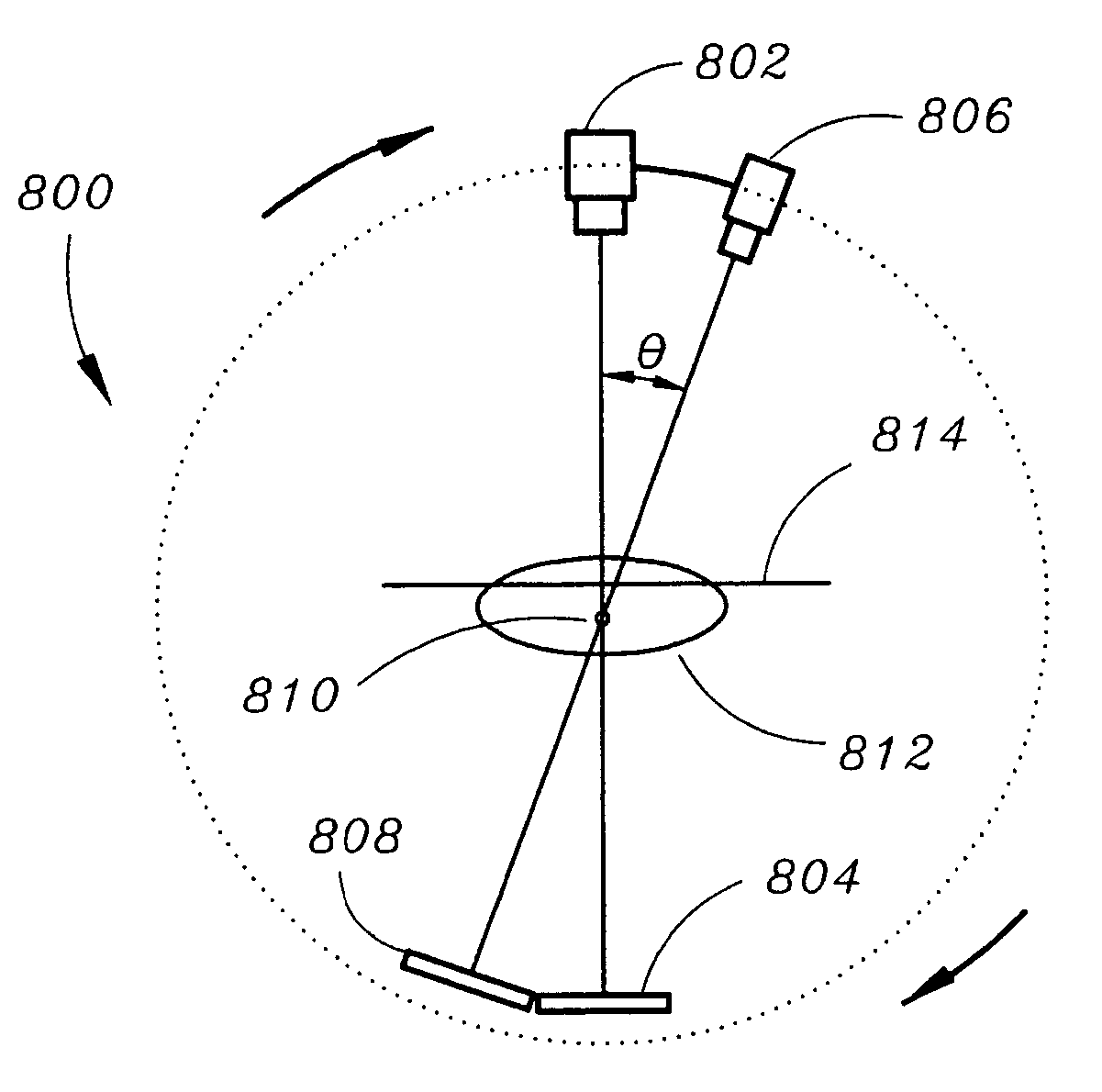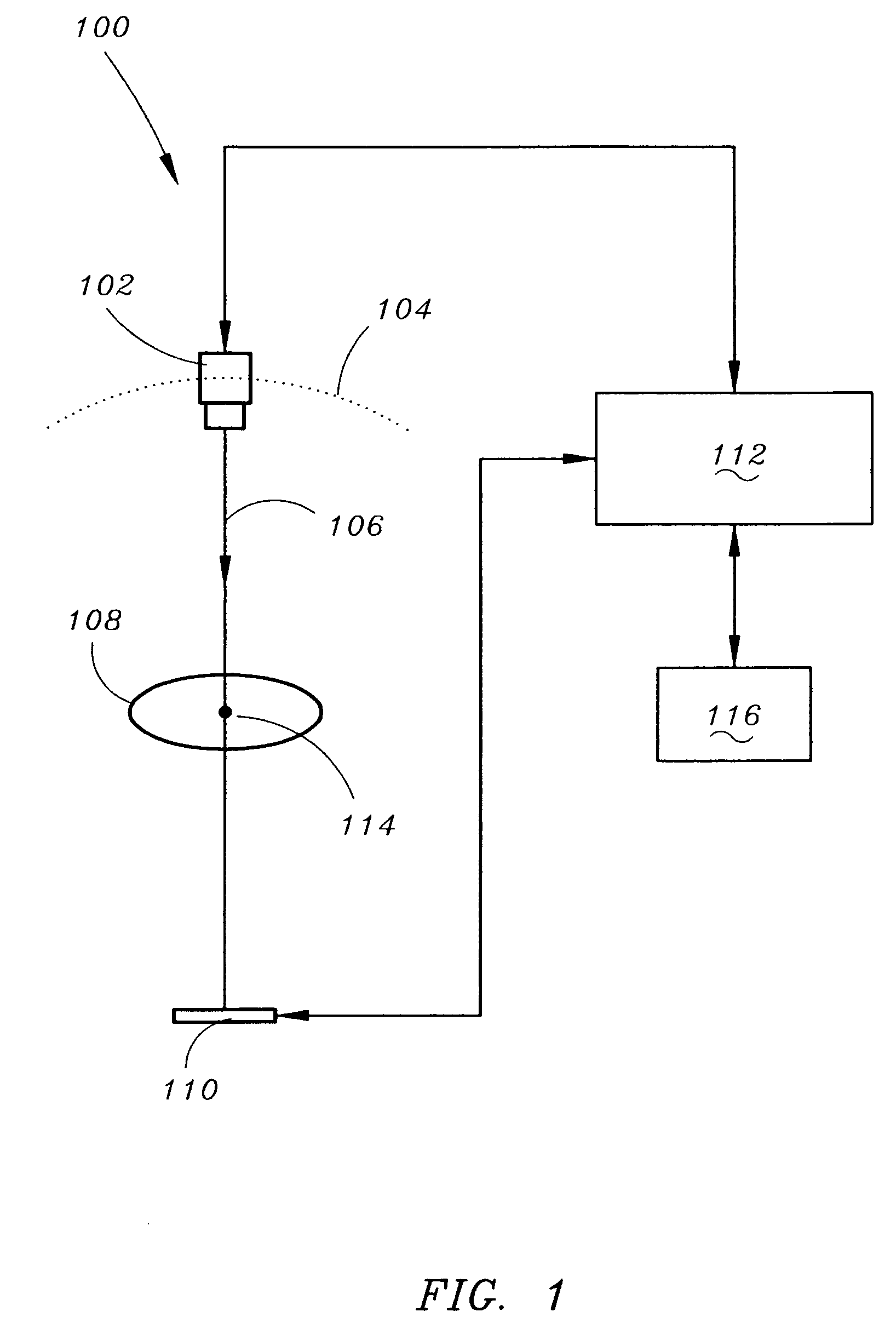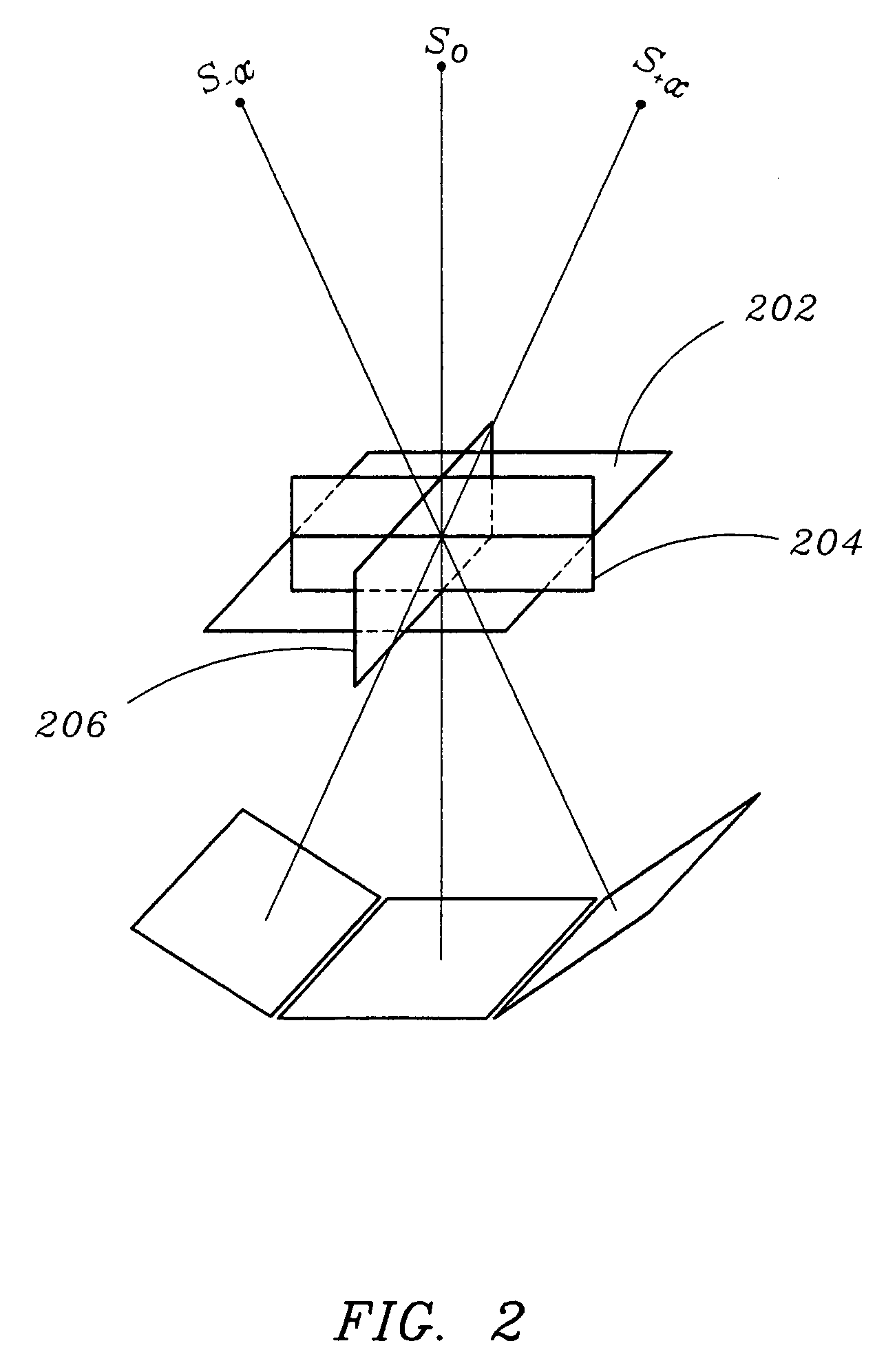4-dimensional digital tomosynthesis and its applications in radiation therapy
a digital tomography and 4d technology, applied in the field of x-ray imaging, can solve the problems of insufficient exact computed tomography, limited gantry rotation speed (e.g., linac machine) and limited rotation speed (rotation per minute),
- Summary
- Abstract
- Description
- Claims
- Application Information
AI Technical Summary
Benefits of technology
Problems solved by technology
Method used
Image
Examples
Embodiment Construction
[0028]Reference will now be made in detail to the presently preferred embodiments of the invention, examples of which are illustrated in the accompanying drawings.
[0029]Four-dimensional computed tomography (4D CT) has been the center of attention for radiation therapy of the lung. Retrospective gating is the preferred method of 4D CT acquisition. This method exploits an external device that measures the breathing cycle and divides that into a number of intervals. Each projection of the CT acquisition is then associated with a time interval. Later (thereby the term retrospective) these projections are binned according to the time interval during the breathing cycle. This method assumes that breathing is periodic and the acquisition takes place over several breathing cycles. At the end, a number of volumes are reconstructed, where each volume represents the patient at a particular time instance during the breathing cycle. The present invention uses DTS to reconstruct cross sections. S...
PUM
 Login to View More
Login to View More Abstract
Description
Claims
Application Information
 Login to View More
Login to View More - R&D
- Intellectual Property
- Life Sciences
- Materials
- Tech Scout
- Unparalleled Data Quality
- Higher Quality Content
- 60% Fewer Hallucinations
Browse by: Latest US Patents, China's latest patents, Technical Efficacy Thesaurus, Application Domain, Technology Topic, Popular Technical Reports.
© 2025 PatSnap. All rights reserved.Legal|Privacy policy|Modern Slavery Act Transparency Statement|Sitemap|About US| Contact US: help@patsnap.com



